#AR VR technology trends
Text
Exploring the Boundaries: The Latest in Augmented Reality Software
Augmented and Virtual Reality (AR VR) Software
Explore the transformative potential of augmented and virtual reality (AR VR) software in this comprehensive article. Discover its evolution, applications, advantages, challenges, and future trends.
Augmented and virtual reality (AR VR) software has transformed the way we perceive and interact with digital environments. As technology continues to evolve, the boundaries between the physical and digital worlds blur, offering unprecedented experiences and opportunities. In this article, we delve into the realm of AR VR software, exploring its evolution, applications, advantages, challenges, and future prospects.
Introduction to Augmented and Virtual Reality (AR VR) Software
Augmented reality (AR) and virtual reality (VR) are immersive technologies that overlay digital content onto the real world or create entirely simulated environments, respectively. While AR enhances the existing environment by adding digital elements, VR immerses users in a completely virtual setting. AR VR software serves as the backbone of these experiences, enabling developers to create compelling content and applications.
Evolution of AR VR Software
The roots of AR VR technology trace back to the early experiments in computer graphics and simulation. Over the decades, advancements in hardware capabilities, display technologies, and computing power have propelled AR VR software to new heights. From bulky headsets to sleek, lightweight devices, the evolution of AR VR hardware has revolutionized user experiences and accessibility.
Key Features and Components
AR VR software encompasses a range of features and components, including immersive 3D graphics, spatial tracking, gesture recognition, and real-time rendering. These elements work in tandem to create seamless and interactive experiences for users across various platforms and devices.
Applications across Industries
The versatility of AR VR software extends across diverse industries, including healthcare, education, gaming, architecture, automotive, and entertainment. From medical simulations and virtual classrooms to interactive gaming experiences and architectural visualization, AR VR technology is reshaping how we work, learn, and play.
Advantages of AR VR Software
One of the primary advantages of AR VR software is its ability to create immersive and engaging environments that captivate users' attention. Whether used for training simulations, virtual tours, or interactive storytelling, AR VR experiences enhance user engagement, retention, and comprehension.
Challenges and Limitations
Despite its potential, AR VR software faces several challenges, including technical constraints, content creation complexities, and user adoption barriers. Additionally, the cost of hardware and development can pose significant challenges for organizations seeking to integrate AR VR into their workflows.
Future Trends in AR VR Software
Looking ahead, the future of AR VR software is filled with promise and innovation. From advancements in wearable technology and haptic feedback to the integration of AI and machine learning, the next generation of AR VR experiences will be more immersive, intuitive, and adaptive.
Case Studies
Several organizations have already embraced AR VR technology to create impactful experiences and drive business outcomes. From IKEA's virtual furniture showroom to medical training simulations by surgical institutes, these case studies highlight the transformative power of AR VR software across various sectors.
How to Choose the Right AR VR Software
Selecting the right AR VR software requires careful consideration of factors such as compatibility, functionality, scalability, and support services. Whether developing custom applications or leveraging existing platforms, organizations must align their objectives with the capabilities of the chosen software.
Developing AR VR Software
Developers have access to a plethora of tools, frameworks, and platforms for creating AR VR experiences. From Unity and Unreal Engine to proprietary SDKs and APIs, the development landscape offers flexibility and scalability for projects of all sizes and complexities.
Integrating AR VR into Business Strategies
Businesses can leverage AR VR technology to enhance customer engagement, streamline operations, and differentiate their brand in competitive markets. By incorporating AR VR into marketing campaigns, product demonstrations, and training programs, organizations can create memorable experiences that resonate with their target audience.
Ethical Considerations in AR VR Development
As AR VR technology becomes more pervasive, ethical considerations surrounding privacy, data security, and content moderation come to the forefront. Developers and organizations must prioritize user safety and transparency while adhering to industry regulations and ethical guidelines.
The Role of AI in Augmented and Virtual Reality
Artificial intelligence (AI) plays a pivotal role in advancing AR VR technology, enabling personalized experiences, intelligent content recommendations, and predictive analytics. By harnessing the power of AI, AR VR software can adapt to user behaviors, preferences, and contextual cues, enhancing immersion and interactivity.
Education and Training in AR VR
Educators and trainers are increasingly turning to AR VR technology to create immersive learning experiences that transcend traditional boundaries. From virtual field trips and historical reconstructions to hands-on simulations and skill-based training, AR VR offers endless possibilities for education and training.
Conclusion
In conclusion, augmented and virtual reality (AR VR) software represents a paradigm shift in how we interact with digital content and environments. With its ability to create immersive experiences across various industries and applications, AR VR technology holds immense potential for innovation, exploration, and human connection. As we navigate the complexities and possibilities of this transformative technology, it is essential to remain ethical, inclusive, and mindful of the impact on society.
FAQs
What distinguishes augmented reality from virtual reality?
How does AR VR software enhance user engagement?
What are some challenges associated with developing AR VR applications?
Can AI enhance the capabilities of AR VR software?
How is AR VR technology being used in education and training?
#Augmented reality software#Virtual reality development#AR VR technology trends#Immersive experiences#AR VR applications in education#Virtual reality gaming#AR VR hardware#Interactive storytelling#Augmented reality in healthcare
0 notes
Text
Curious about the future of mobile apps? Explore the Top 15 Mobile App Development Trends in 2024! From AI-powered experiences to immersive AR/VR integration, stay ahead of the curve with the latest insights shaping the mobile landscape.
Don't miss out on the innovations driving app development forward!
1 note
·
View note
Text

The Future of Virtual and Augmented Reality (VR/AR), powered by advancements like Dev Technosys, promises immersive experiences across industries. Anticipated trends include enhanced realism through AI, widespread adoption in healthcare for training and therapy, integration into education for interactive learning, and expanded applications in remote work and collaboration. As technology evolves, VR/AR will revolutionize how we perceive and interact with digital content, shaping the future of human-computer interaction.
#AI Impact on Augmented Reality#AI Impact on Virtual Reality#Future Trends in VR and AR Technology#Impact of Using Artificial Intelligence in VR and AR
0 notes
Text
Technology Trends Every Business Should Embrace in 2024
In the fast-paced world of business, staying ahead of the curve is not just an advantage, it’s a necessity. As we step into 2024, there are several technology trends that can propel your business forward. Let’s explore the key trends every business should embrace to thrive in the evolving digital landscape.
In today’s fast-moving business world, technology trends continually reshape its core.…

View On WordPress
#TechTrends#5G#AL (Artificial Intelligent)#AR (Augmented Reality)#Blockchain#Business Technology#digitalTransformation#innovation#IoT (Internet of things)#Robotics#Technews#technology#techonology trends#TechSolutions#VR (Virtual Reality)
0 notes
Text
#AR#VR#Augmented Reality#3d product modeling#3d product visualization#3d product design#Engineering Visualization#Mechanical Engineering#Architectural Visualization#Automotive Engineering#Engineering Trends#Visualization Technologies#Design Optimization
1 note
·
View note
Text
夏普將於 2024 年夏季推出 HMD——該公司歷史上首個夏普技術日將展示大量 AR VR 技術
夏普,這個家喻戶曉的品牌即將在2024年夏季推出其首款頭戴式顯示器(HMD),標誌著其深入擴增實境(AR)和虛擬實境(VR)領域的堅定一步。在即將到來的夏普技術日,我們將預見大量AR與VR技術的集中展示,其中XR技術的結合將開創全新的互動方式,為用戶帶來前所未有的便捷。
夏普的HMD產品充分展示了XR技術如何在真實空間中顯示信息,並在工作與生活中發揮計算支持的作用。這些眼鏡提供的服務範圍從未來城市漫遊到擴展辦公空間,再到日常生活中的視覺與聽覺支持,每一個細節都彰顯了夏普對於創新的追求。
HMD的細節令人印象深刻:搭載Sony的IMX258影像感應器,這款1/3.06英寸的1300萬像素自動對焦傳感器,不僅解析度達到4208 x 3120,還能在極小的模組尺寸中實現(8.5 x 8.5mm,高度不超過5mm),這樣的設計使得HMD的攜帶與佩戴變得更加方便。結合KANTATSU 5P +…
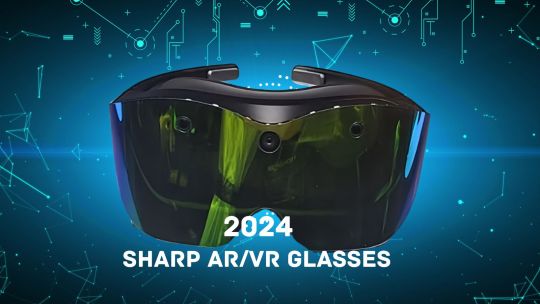
View On WordPress
#2024年科技產品#AR/VR Headsets#AR/VR頭戴裝置#Augmented Reality#科技趨勢#科技創新#虛擬現實#虛擬實境#虛擬實境遊戲#虛擬實境資訊#虛擬實境新聞#Sharp HMD#Tech Products 2024#Tech Trends#Technology Innovation#virtual reality#vr#vr news#vr news today#Wearable Tech#XR Technology#XR技術#擴增現實#智能穿戴設備
0 notes
Text
Multimeta LLC: Pioneering the Metaverse with Web 3.0 Development
In an era where the digital world is constantly evolving, one company stands at the forefront of innovation, driving the transformation of the internet into the metaverse. Multimeta LLC, a trailblazing metaverse development company, is leading the charge in the realm of web 3.0, shaping a future where virtual and physical realities seamlessly merge.
A Glimpse into the Metaverse:
Before we dive into Multimeta LLC's pioneering work, let's take a moment to understand the concept of the metaverse and why it's generating so much buzz. The metaverse represents a convergence of augmented reality (AR), virtual reality (VR), and the internet, creating immersive digital spaces where users can interact, work, play, and socialize. It's a vision of the internet as a three-dimensional, interconnected world.
Multimeta LLC: The Visionaries Behind the Metaverse:
Metaverse development UAE is not just a company; it's a vision. At its core, Multimeta is on a mission to redefine how we experience the digital world. They are committed to pushing the boundaries of technology to create immersive, engaging, and transformative metaverse experiences.
Core Services:
Multimeta LLC offers a range of services that are crucial in shaping the metaverse:
Virtual World Creation: The company specializes in building immersive virtual worlds that cater to diverse needs, from gaming environments to educational spaces and virtual commerce hubs.
Blockchain Integration: Leveraging the power of blockchain technology, Multimeta LLC ensures security, transparency, and ownership in the metaverse through the use of Non-Fungible Tokens (NFTs).
Augmented Reality (AR) Experiences: Multimeta LLC designs AR applications that bridge the gap between the digital and physical worlds, enhancing real-world experiences.
Innovations in Web 3.0:
What sets Multimeta LLC apart is its dedication to harnessing cutting-edge technologies. In the web 3.0 landscape, they utilize blockchain, NFTs, Artificial Intelligence (AI), and other groundbreaking tech to create metaverse experiences that were once the stuff of science fiction.
Success Stories and Case Studies:
Multimeta LLC's portfolio is a testament to their prowess in metaverse development. From creating virtual realms for global gaming communities to facilitating virtual real estate transactions via blockchain, they have left their mark on various industries.
The Future of Web 3.0 and Multimeta LLC's Role:
The Web 3.0 development in UAE revolution is just beginning, and Multimeta LLC is poised to play a pivotal role. As the metaverse gains traction, we can expect to see even more innovative projects and collaborations from this visionary company, shaping the digital landscape for generations to come.
Conclusion:
Multimeta LLC is not merely a company; it's a beacon of innovation in the metaverse development space. They are charting a course toward a future where the metaverse blurs the lines between reality and the digital realm, and we can't wait to see what they'll create next.
Call to Action:
Explore Multimeta LLC's website to learn more about their projects and how they are shaping the metaverse. If you're interested in collaborating with them or want to be a part of the metaverse revolution, don't hesitate to reach out.
#AR VR Development in UAE#Web 3.0 development in UAE#Blockchain development in UAE#Immersive Technologies in UAE#Streaming Solutions in UAE#CyperSecurity Solutions in UAE#Metaverse development UAE#Blockchain technology UAE#NFTs in the UAE#Decentralized applications (DApps) UAE#Smart contracts development UAE#Virtual reality (VR) UAE#Augmented reality (AR) UAE#Web 3.0 startups in the UAE#Cryptocurrency development UAE#Digital identity UAE#Web 3.0 trends in the UAE#Blockchain adoption in the UAE#Ethereum development UAE#Web 3.0 consulting firms in the UAE#Blockchain solutions UAE#Metaverse companies in the UAE#UAE blockchain initiatives#Web 3.0 development services UAE#Crypto regulations in the UAE
0 notes
Text
Tech Odyssey 2023: Navigating the Seas of Innovation
Charting a Course Through the Technological Frontier:
Provide an engaging introduction that highlights the rapid pace of technological advancements.
Mention the importance of staying updated with emerging technologies in today’s world.
Section 1: AI and Machine Learning Revolution:
Discuss recent developments in artificial intelligence and machine learning.
Highlight real-world…

View On WordPress
#AI and Machine Learning5G#AR and VR#Big Data Analytics#Biotechnology#Consumer Electronics#Cybersecurity#Digital Transformation#Emerging Technologies#Future of Work#Gadgets#Health Tech#Innovation 2023#Remote Work#Sustainable Tech#Tech Blog#Tech Education#Tech Investments#Technology Trends#TechnologyQuantum Computing
1 note
·
View note
Text
Unveiling the Power of 3D Visualization: Revolutionizing Engineering Applications

In the world of engineering, complex concepts and intricate designs often require effective means of communication to convey ideas, identify potential issues, and foster innovation. 3D visualization has emerged as a powerful tool that not only aids in comprehending intricate engineering concepts but also fuels creativity and enhances collaboration among multidisciplinary teams. This blog dives deep into the realm of 3D visualization for engineering applications, exploring its benefits, applications, and the technologies driving its evolution.
The Power of 3D Visualization
1. Enhanced Understanding: Traditional 2D drawings and diagrams can sometimes fall short in capturing the full complexity of engineering designs. 3D visualization empowers engineers, architects, and designers to create realistic and immersive representations of their ideas. This level of detail allows stakeholders to grasp concepts more easily and make informed decisions.
2. Identification of Design Flaws: One of the primary advantages of 3D visualization is its ability to identify potential design flaws before physical prototyping begins. Engineers can simulate real-world conditions, test stress points, and analyze the behavior of components in various scenarios. This process saves both time and resources that would have been wasted on rectifying issues post-construction.
3. Efficient Communication: When working on multidisciplinary projects, effective communication is essential. 3D visualization simplifies the sharing of ideas by presenting a clear visual representation of the design. This reduces the chances of misinterpretation and encourages productive discussions among team members from diverse backgrounds.
4. Innovation and Creativity: 3D visualization fosters creativity by enabling engineers to experiment with different design variations quickly. This flexibility encourages out-of-the-box thinking and exploration of unconventional ideas, leading to innovative solutions that might not have been considered otherwise.
5. Client Engagement: For projects involving clients or stakeholders who might not have technical expertise, 3D visualization serves as a bridge between complex engineering concepts and layman understanding. Clients can visualize the final product, making it easier to align their expectations with the project's goals.
Applications of 3D Visualization in Engineering
1. Architectural Visualization: In architectural engineering, 3D visualization brings blueprints to life, allowing architects to present realistic walkthroughs of structures before construction. This helps clients visualize the final appearance and make informed decisions about design elements.
2. Product Design and Prototyping: Engineers can use 3D visualization to create virtual prototypes of products, enabling them to analyze the functionality, ergonomics, and aesthetics. This process accelerates the design iteration phase and reduces the number of physical prototypes required.
3. Mechanical Engineering: For mechanical systems, 3D visualization aids in simulating motion, stress analysis, and assembly processes. Engineers can identify interferences, optimize part arrangements, and predict system behavior under different conditions.
4. Civil Engineering and Infrastructure Projects: From bridges to roadways, 3D visualization facilitates the planning and execution of large-scale infrastructure projects. Engineers can simulate traffic flow, assess environmental impacts, and optimize structural design for safety and efficiency.
5. Aerospace and Automotive Engineering: In these industries, intricate designs and high-performance requirements demand rigorous testing. 3D visualization allows engineers to simulate aerodynamics, structural integrity, and other critical factors before manufacturing.
Technologies Driving 3D Visualization
1. Computer-Aided Design (CAD): CAD software forms the foundation of 3D visualization. It enables engineers to create detailed digital models of components and systems. Modern CAD tools offer parametric design, enabling quick modifications and iterative design processes.
2. Virtual Reality (VR) and Augmented Reality (AR): VR and AR technologies enhance the immersive experience of 3D visualization. VR headsets enable users to step into a digital environment, while AR overlays digital content onto the real world, making it ideal for on-site inspections and maintenance tasks.
3. Simulation Software: Simulation tools allow engineers to analyze how a design will behave under various conditions. Finite element analysis (FEA) and computational fluid dynamics (CFD) simulations help predict stress, heat transfer, and fluid flow, enabling design optimization.
4. Rendering Engines: Rendering engines create photorealistic images from 3D models, enhancing visualization quality. These engines simulate lighting, materials, and textures, providing a lifelike representation of the design.
Future Trends and Challenges
As technology evolves, so will the field of 3D visualization for engineering applications. Here are some anticipated trends and challenges:
1. Real-time Collaboration: With the rise of cloud-based tools, engineers worldwide can collaborate on 3D models in real time. This facilitates global teamwork and accelerates project timelines.
2. Artificial Intelligence (AI) Integration: AI could enhance 3D visualization by automating design tasks, predicting failure points, and generating design alternatives based on predefined criteria.
3. Data Integration: Integrating real-time data from sensors and IoT devices into 3D models will enable engineers to monitor performance, identify anomalies, and implement preventive maintenance strategies.
4. Ethical Considerations: As 3D visualization tools become more sophisticated, ethical concerns might arise regarding the potential misuse of manipulated visualizations to deceive stakeholders or obscure design flaws.
In conclusion, 3D visualization is transforming the engineering landscape by enhancing understanding, fostering collaboration, and driving innovation. From architectural marvels to cutting-edge technological advancements, 3D visualization empowers engineers to push the boundaries of what is possible. As technology continues to advance, the future of engineering will undoubtedly be shaped by the dynamic capabilities of 3D visualization.
#3D Visualization#Engineering Visualization#CAD Software#Virtual Reality (VR)#Augmented Reality (AR)#Design Innovation#Visualization Tools#Product Design#Architectural Visualization#Mechanical Engineering#Civil Engineering#Aerospace Engineering#Automotive Engineering#Data Integration#Real-time Visualization#Engineering Trends#Visualization Technologies#Design Optimization
1 note
·
View note
Text
Captivating Audiences: The Evolution of the Digital Signage Market

In the ever-evolving landscape of marketing and communication, the Digital Signage Market has emerged as a dynamic force that's transforming the way businesses engage with their audiences. Gone are the days of static posters and traditional billboards – digital signage has taken center stage, offering a visually compelling and interactive platform for delivering messages, promotions, and information.
The Digital Signage Market encompasses a wide array of applications, spanning industries such as retail, hospitality, healthcare, education, and transportation. Its versatility lies in its ability to deliver dynamic content, including videos, images, animations, and real-time data, all of which grab attention and convey messages in a more engaging manner.
A driving force behind the growth of the Digital Signage Market is its power to enhance customer experiences. In the retail sector, for example, businesses are leveraging digital signage to create immersive and personalized shopping journeys. Interactive displays allow customers to explore products, access additional information, and even try out virtual simulations. This not only boosts customer engagement but also helps convert browsing into buying.
Furthermore, the integration of data analytics is revolutionizing the effectiveness of digital signage. Businesses can gather insights on customer behavior, preferences, and engagement patterns. This data-driven approach enables them to tailor content, delivering the right message to the right audience at the right time. This level of personalization contributes to a more meaningful interaction, fostering customer loyalty and brand affinity.
As technology continues to advance, the Digital Signage Market is experiencing innovations that push the boundaries of creativity. From curved and ultra-high-definition displays to transparent screens and holographic projections, the possibilities seem limitless. Such innovations enable businesses to create immersive environments that captivate audiences and leave lasting impressions.
However, the Digital Signage Market is not without challenges. Content management, ensuring consistency across multiple screens, and addressing security concerns are some of the hurdles that businesses must navigate. Moreover, as the market becomes more saturated, distinguishing oneself through compelling content and strategies becomes crucial for success.
In conclusion, the Digital Signage Market is revolutionizing the way businesses communicate, interact, and leave an impact on their audiences. With its versatility, interactivity, and data-driven capabilities, digital signage is playing an instrumental role in shaping modern marketing and customer engagement strategies. As technology evolves and customer expectations rise, businesses that harness the potential of the Digital Signage Market are better positioned to thrive in a digital-first world.
#Digital Signage#Market Trends#Interactive Displays#Content Management#Customer Engagement#Data Analytics#Personalization#Technology Innovation#AI Integration#Sustainability#AR/VR Experiences#Advertising Solutions#Communication Strategies#Retail Marketing#Digital Communication#Audience Targeting
1 note
·
View note
Text
The Future of Market Research: Unveiling the Top 10 Emerging Trends
The landscape of market research is undergoing a transformative shift, driven by the convergence of technology, consumer behavior, and data-driven insights. Embracing these six emerging trends empowers businesses to connect with their target audiences on a deeper level, adapt to changing market dynamics, and make informed decisions that drive success
#Artificial intelligence (AI)#Augmented reality (AR) and virtual reality (VR)#Automation#Big data#Blockchain technology#Consumer behavior#Customer experience (CX)#Data analytics#Digital transformation#Emerging trends#Ethnographic research#Future of market research#Internet of Things (IoT)#Machine learning#market research#market xcel#Mobile market research#Personalization#Predictive analytics#Social media analytics#Voice of the customer (VoC)
0 notes
Text
The Future of E-commerce: What You Need to Know About the Latest Trends and Technologies
Greetings, fellow shoppers! As the world becomes increasingly digital, it's no surprise that e-commerce is booming. In fact, according to Statista, the global e-commerce market is expected to reach $6.54 trillion by 2023. That's a staggering amount, and it's clear that the future of e-commerce is bright. But what are the latest trends and technologies that are driving this growth? And what do you need to know in order to stay ahead of the game?
Mobile Commerce (M-Commerce)
One of the biggest trends in e-commerce right now is mobile commerce, or M-commerce for short. As smartphones become more advanced and ubiquitous, it's no surprise that people are increasingly using them to make purchases. In fact, a recent report by eMarketer predicts that by 2021, mobile commerce will account for 72.9% of all e-commerce sales. That's a huge market, and it's one that you can't afford to ignore.
Artificial Intelligence (AI)
Another technology that's transforming e-commerce is artificial intelligence. AI is being used in a variety of ways, from chatbots that can answer customer questions to personalized product recommendations based on a customer's browsing and purchase history. With AI, e-commerce companies can provide a more personalized and efficient shopping experience, which can lead to higher sales and customer satisfaction.
Augmented Reality (AR)
Augmented reality is another technology that's starting to make waves in e-commerce. With AR, customers can see what a product will look like in their own environment before they buy it. For example, IKEA's AR app allows customers to place virtual furniture in their own homes to see how it will look before they make a purchase. This technology has the potential to revolutionize the way we shop online, and it's one to watch in the coming years.
Voice Commerce
Finally, voice commerce is another trend that's on the rise. With smart speakers like Amazon's Echo and Google Home becoming more common in households, voice commerce is becoming an increasingly important channel for e-commerce companies. In fact, a recent study by OC&C Strategy Consultants predicts that by 2022, voice commerce will be a $40 billion industry in the US alone.
So, what does all this mean for you? If you're an e-commerce business owner or manager, it's important to stay on top of these trends and technologies. Mobile commerce, artificial intelligence, augmented reality, and voice commerce are all areas where you can differentiate yourself from the competition and provide a better shopping experience for your customers.
Of course, there are many other trends and technologies that are shaping the future of e-commerce, but these are some of the most important ones to keep an eye on. Whether you're a shopper or a business owner, the future of e-commerce is exciting and full of possibilities.
Thank you for reading, and happy shopping!
#e-commerce#M-commerce#artificial intelligence#AI#augmented reality#AR#voice commerce#shopping#online shopping#retail#future trends#technology#digital#smartphones#customer experience#customer satisfaction#personalization#chatbots#virtual reality#VR#smart speakers#Amazon Echo#Google Home#market trends#shopping habits
0 notes
Photo
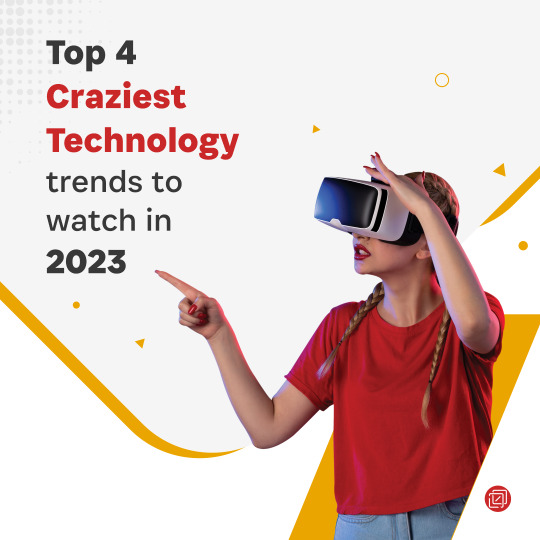
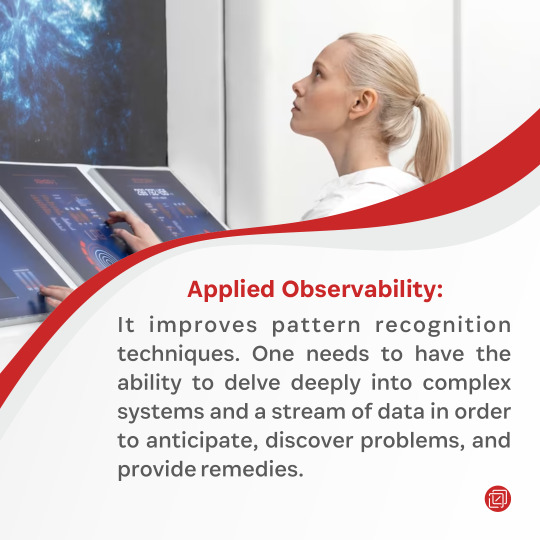

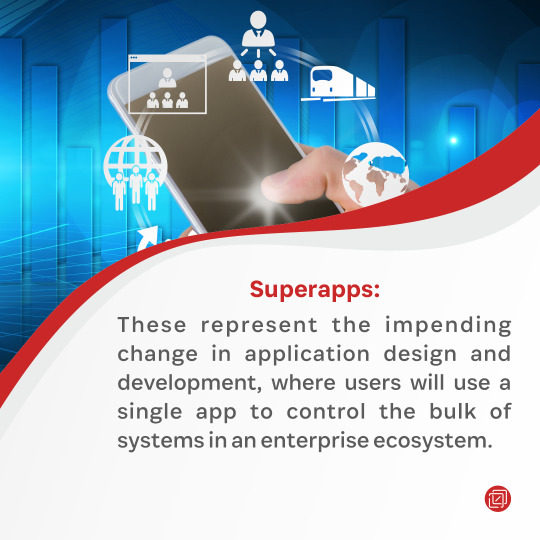
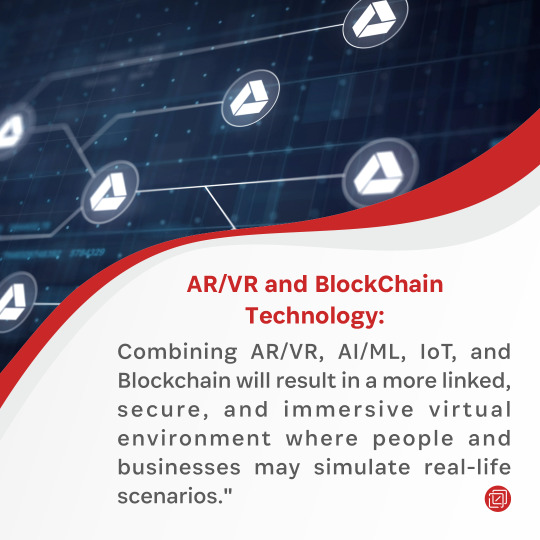
Fasten your seat belts and witness the mind-boggling future of technology!
Here are the top 4 craziest technology trends that will transform the world in 2023.
#technologies#latest trends#trends 2023#digital immune system#ai#testing#apps#development#single app#ar/vr#blockchain#algoworks#iot
1 note
·
View note
Text
Unlocking the Potential of Virtual Reality: The Best VR Games
The world of gaming is changing very quickly. Virtual reality (VR) technology has created new possibilities for gamers. With VR, gamers can experience immersive worlds that look real and have never been seen before. This transports them to a whole new level of entertainment.
There are lots of different kinds of VR games, from adventure games to shooters. In this article, we explore some of the best VR titles available today. We tell you about their unique features and what makes them stand out from the crowd.
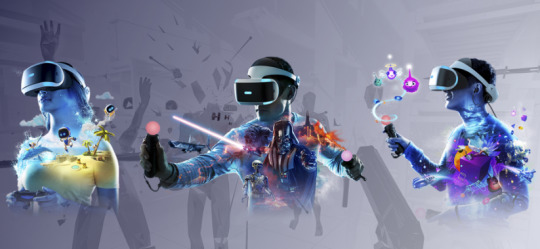
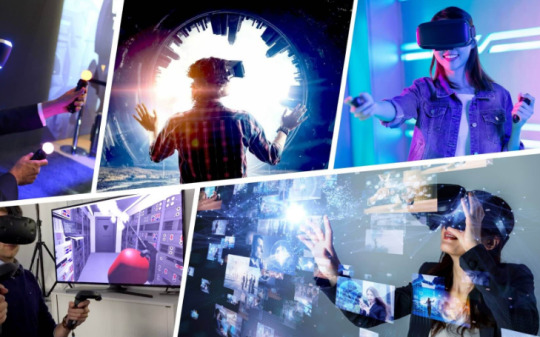
So if you're looking for an unforgettable gaming experience, read on to discover why these are some of the top picks in virtual reality!
The concept of virtual reality (VR) gaming
Virtual Reality (VR) gaming is a new technology that has made video games even better. It allows gamers to experience immersive and realistic 3D worlds. This makes them feel as if they are actually inside the game. VR can be used in a lot of different ways, like exploring virtual environments, playing interactive games, or even creating art.
Since VR is becoming more popular, there are more games being made for it. This means that there is a game out there for everyone! Whether you like adventure or relaxing in a virtual paradise, VR has it all. Let's explore some of the best VR games and how they are changing the gaming world!
Half Life: Alyx.
Walking Dead: Saints and Sinners.
L.A. Noire: The VR Case Files.
Among Us VR.
Star Wars Squadrons.
Phasmophobia.
Tabletop Simulator.
Superhot VR.
The various games available and what makes them stand out from the rest
The best VR games offer something for everyone — no matter your preference. If you're looking for an immersive adventure, there are plenty of titles to explore.
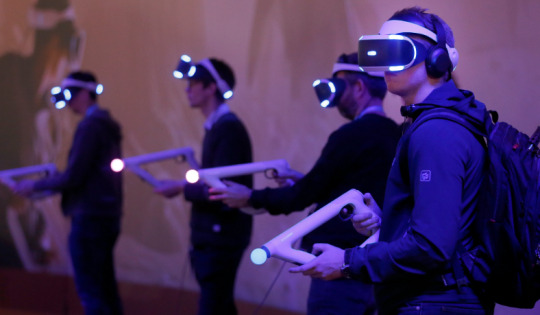
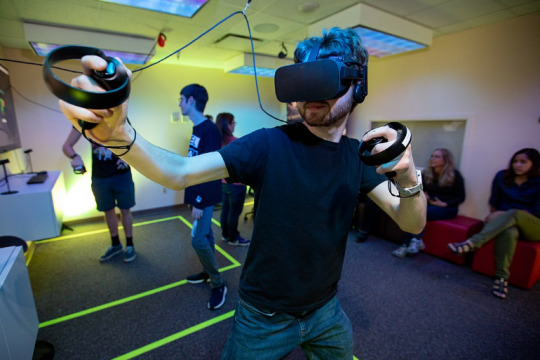
From puzzle-solving mysteries like The Climb to zombie shooters like Arizona Sunshine, these immersive worlds will transport you to a whole new level of virtual entertainment. For gamers who want something more action-packed, there's no shortage of shooters and combat games to choose from — such as the popular Raw Data or Space Pirate Trainer.
Examine how VR gaming has evolved over time, and its impact on gamers around the world
Since its emergence in the early 2000s, VR gaming has come a long way. Advances in technology have allowed for more immersive worlds with stunning graphics and innovative gameplay — making it easier than ever to get lost in these virtual environments.
Not only are games becoming more realistic and engaging, but they also provide an incredible level of escapism as players explore new worlds without leaving their homes. This has had a huge impact on gamers around the world — creating an entirely new way of experiencing gaming.
Explore some of the best VR titles available today – their unique features, what makes them stand out from the crowd, and how they are pushing boundaries in gaming
Today's VR games are taking immersion to a whole new level. Titles like Beat Saber and Job Simulator are leading the way in innovative gameplay, allowing players to physically interact with their virtual environment — from swinging a lightsaber as if they were actually dueling with enemies or using their hands to interact with objects in the game.
These titles also offer exciting visuals that make you feel as though you are actually part of the action
Other top picks for games include Superhot VR and Vader Immortal. They are different from other games because they are more immersive. Superhot VR lets you control time as you fight enemies and dodge bullets in slow motion. Vader Immortal is realistic and lets you explore Mustafar with a unique story. You can really feel the force!

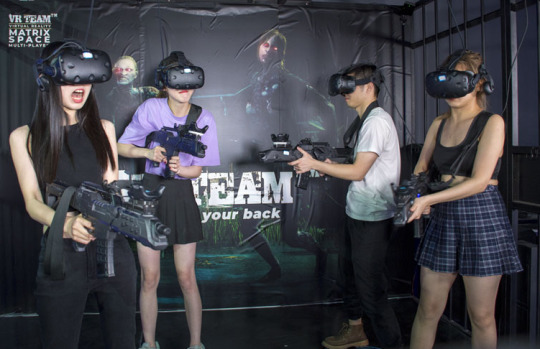
VR gaming is also taking a step in a more social direction, with titles such as Rec Room and Echo Arena giving players the chance to connect and team up with others from around the world. These games provide an incredibly engaging experience that no other platform can offer.
Some insight on the evolving technology and where it is heading in the future
As virtual reality (VR) games become more popular, people are making new technologies to make the VR world even better. For example, voice recognition and motion tracking let players have a more realistic experience.


VR gaming is becoming more popular. This means that the technology will continue to grow and change. We might see even better graphics and gameplay in the future. This would allow players to feel even more like they are in the game.
Virtual reality is a new way to play video games. You can wear a VR headset and it will feel like you are in the game. You can explore new worlds without leaving your home.
Virtual reality is a way to have an adventure without leaving your home. You can explore different worlds and meet new people from all over the globe. There are lots of different virtual reality games to choose from, so you're sure to find one that you'll love!
#vrisrezi#fnaf vr#half life vr but the ai is self aware#ygo vrains#vrm#metaverse#ar#virtual reality#ces#low angle pov#news#trending news#pakistan news#general news#today news#score#rewards#teams#technology#start times#gamebaionline#video games#gamebaigo88#all for the game#tag game#reactions#hillarious#esports#steam#gamers
0 notes
Text
Top Tech Trends That Will Blaze The IT Industry With Rapid Success In 2023
Read this article and know Top Tech Trends That Will Blaze The IT Industry With Rapid Success In 2023. https://medium.com/@harikrishnapatel/top-tech-trends-that-will-blaze-the-it-industry-with-rapid-success-in-2023-eea60fb1d65b

0 notes